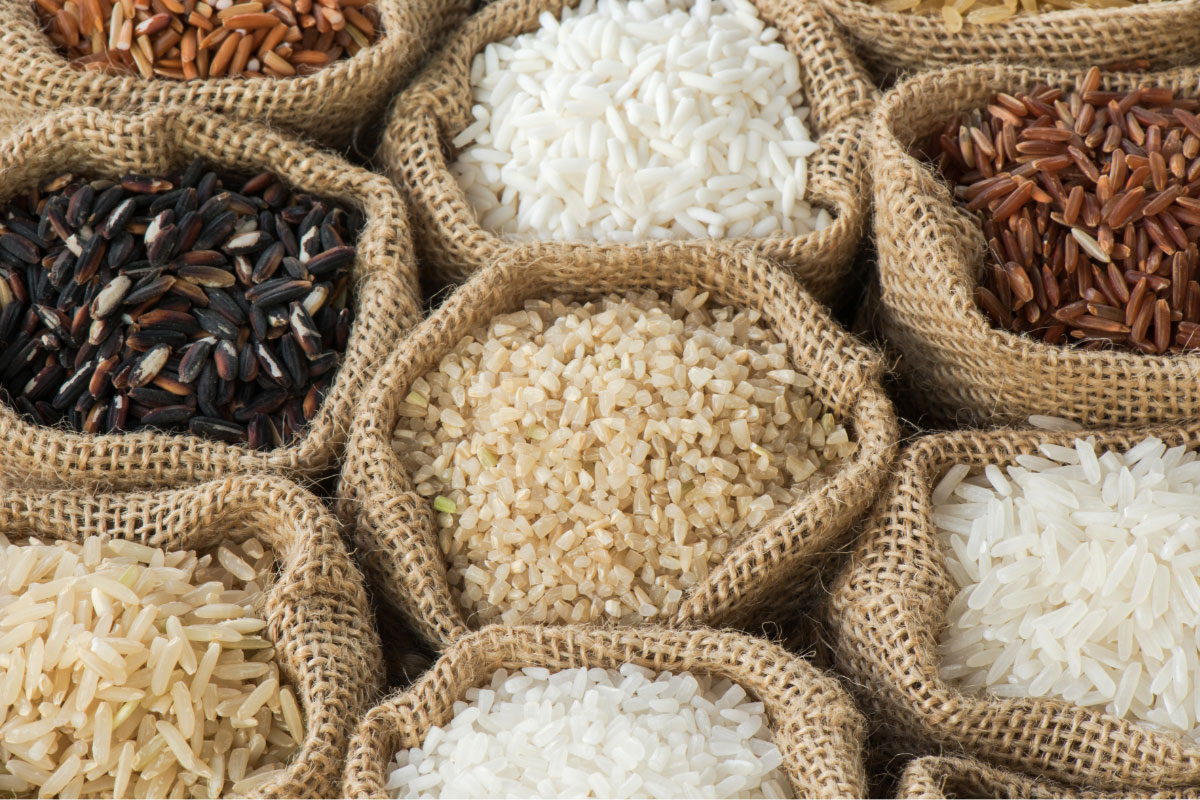Rice is grown in more than a hundred countries, with a total harvested area of approximately 158 million hectares, producing more than 700 million tons annually (470 million tons of milled rice). Nearly 640 million tons of rice are grown in Asia, representing 90% of global production. Sub-Saharan Africa produces about 19 million tons and Latin America some 25 million tons. In Asia and sub-Saharan Africa, almost all rice is grown on small farms of 0.5−3 ha.
Yields range from less than 1 t/ha under very poor rainfed conditions to more than 10 t/ha in intensive temperate irrigated systems. Small, and in many areas shrinking, farm sizes account for the low incomes of rice farm families. Rice grows in a wide range of environments and is productive in many situations where other crops would fail.
The highest rice yields have traditionally been obtained from plantings in high-latitude areas that have long day length and where intensive farming techniques are practiced, or in low-latitude desert areas that have very high solar energy. Southwestern Australia, Hokkaido in Japan, Spain, Italy, northern California, and the Nile Delta provide the best examples.
More than anywhere else in the world, rice dominates overall crop production (measured by the share of crop area harvested of rice) and overall food consumption (measured by the share of rice in total caloric intake) in rice-producing Asia.
The world’s largest rice producers by far are China and India. Although its area harvested is lower than India’s, China’s rice production is greater due to higher yields because nearly all of China’s rice area is irrigated, whereas less than half of India’s rice area is irrigated. After China and India, the next largest rice producers are Indonesia, Bangladesh, Vietnam, Myanmar, and Thailand. These seven countries all had average production in 2006-08 of more than 30 million tons of paddy and together account for more than 80% of world production.
Despite Asia’s dominance in rice production and consumption, rice is also very important in other parts of the world. In Africa, for example, rice has been the main staple food – defined as the food, among the three main crops, that supplies the largest amount of calories – for at least 50 years in parts of western Africa and for some countries in the Indian Ocean. In these countries, the share of calories from rice has generally not increased substantially over time. In other African countries, however, rice has displaced other staple foods because of the availability of affordable imports from Asia and rice’s easier preparation, which is especially important in urban areas. On balance, in Africa, production has grown rapidly, but rice consumption has grown even faster, with the balance being met by increasing quantities of imports. Western Africa is the main producing subregion, accounting for more than 40% of African production in 2006-08. In terms of individual countries, the leading producers of paddy (2006-08) are Egypt (7.0 million t), Nigeria (3.8 million t), and Madagascar (3.2 million t).

In Latin America and the Caribbean, rice was a preferred pioneer crop in the first half of the 20th century in the savannas of Brazil, Bolivia, Colombia, Uruguay, and Venezuela, and in forest margins throughout the region. Today, rice is the most important source of calories in many Latin American countries, including Ecuador and Peru, Costa Rica and Panama, Guyana and Suriname, and the Caribbean nations of Cuba, Dominican Republic, and Haiti. It is less dominant in consumption than in Asia, however, because of the importance of wheat, maize, and beans in regional diets. Brazil is by far the largest producer, and it accounts for nearly half (46% in 2006-08) of paddy production in the region. After Brazil (11.6 million t), the largest producers are Peru and Colombia (2.5 million t each in 2006-08), followed by Ecuador (1.6 million t).
Elsewhere, the most important production centers are in the United States (California and the southern states near the Mississippi River), which produced 9.0 million t of paddy on average in 2006-08. The leading European producers are Italy, Spain, and Russia. Australia used to be an important producer, but its output has declined substantially in recent years because of recurring drought. Rice consumption in the Pacific islands has increased rapidly over the past two decades. Rice, which is all imported apart from a small amount grown in Papua New Guinea, is displacing traditional starchy root crops as a major staple due to changing tastes, ease of storage and preparation, and sometimes cost.

